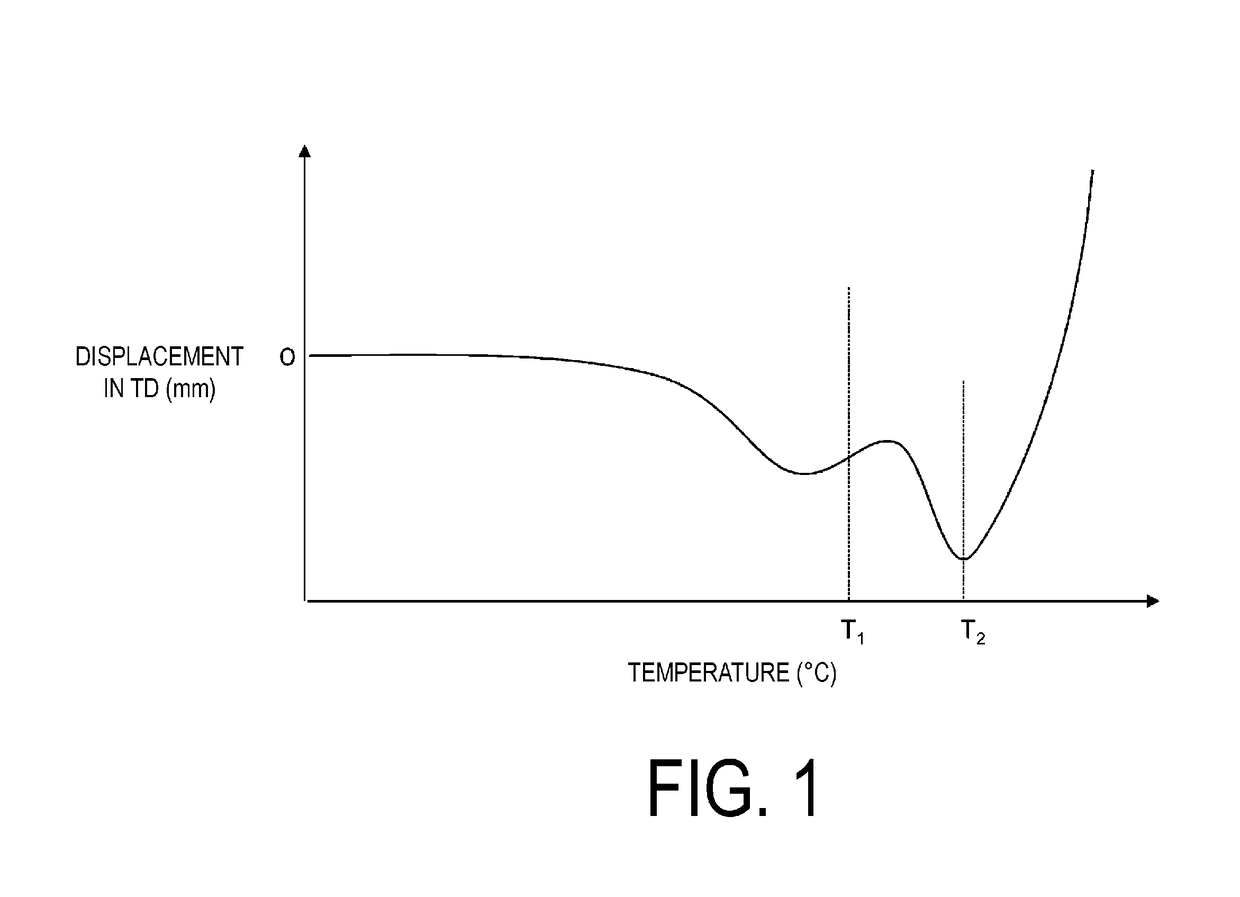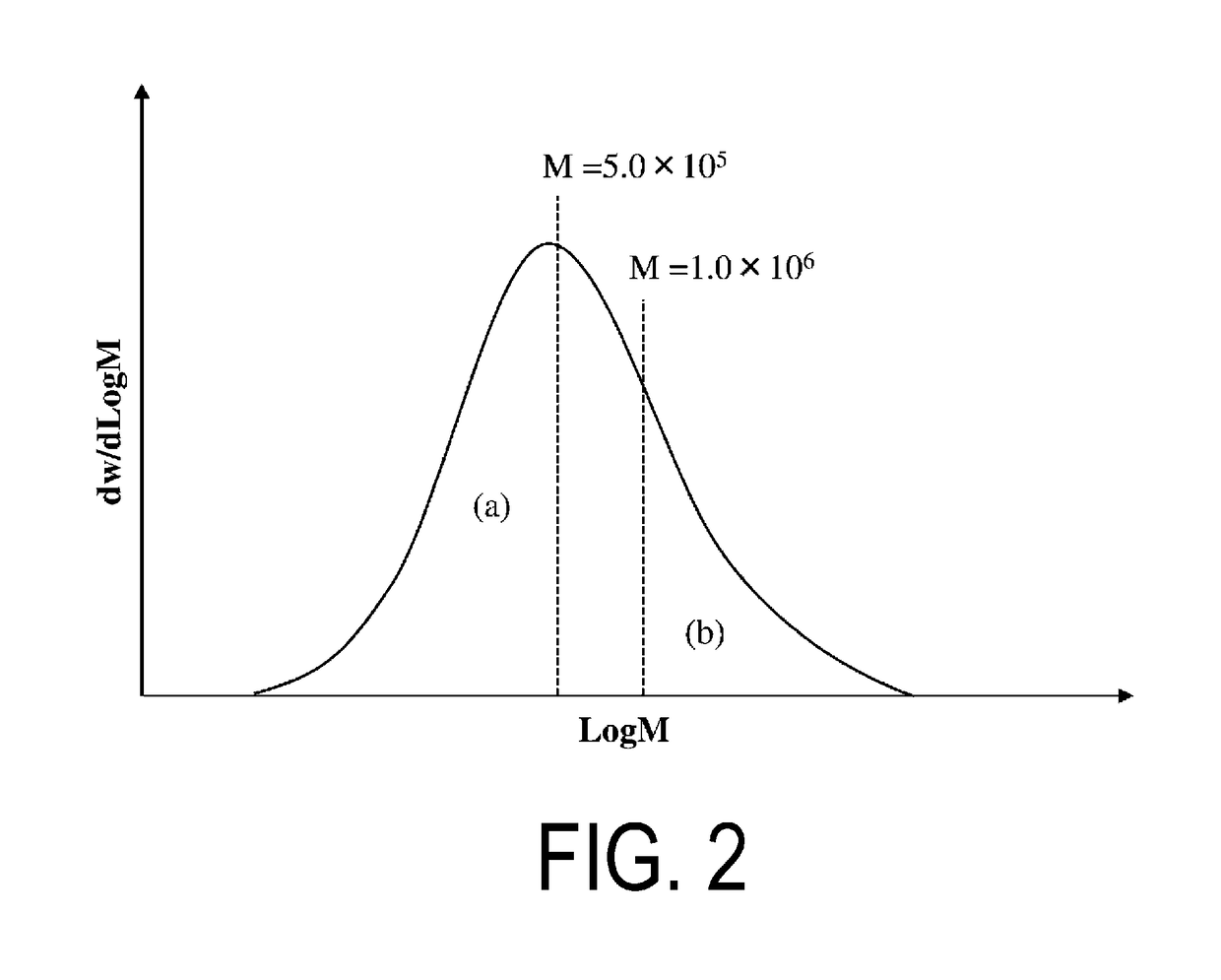Polyolefin microporous membrane, production method thereof, separator for non-aqueous electrolyte secondary battery, and non-aqueous electrolyte secondary battery
- Summary
- Abstract
- Description
- Claims
- Application Information
AI Technical Summary
Benefits of technology
Problems solved by technology
Method used
Image
Examples
example 1
[0096]A polyethylene composition consisting of 15 wt. % of an ultrahigh molecular weight (UHMWPE, weight average molecular weight: 2.89×106, molecular weight distribution (Mw / Mn): 5.28) as an ultrahigh molecular weight polyethylene and 85 wt. % of a high-density polyethylene (HDPE, weight average molecular weight: 5.72×105, molecular weight distribution: 4.81) was prepared. When the entire amount of this polyethylene composition was defined as 100 wt. %, the content of polyethylene components having a molecular weight of not greater than 500000 was 62 wt. %, and the content of polyethylene components having a molecular weight of not less than 1000000 was 24 wt. %. A mixture was obtained by dry-blending 0.375 parts by mass of tetrakis[methylene-3-(3,5-ditertiary-butyl-4-hydroxyphenyl)-propionate]methane into 100 parts by mass of the obtained polyethylene composition.
[0097]A polyethylene solution was prepared by charging 30 parts by mass of the obtained mixture into a strong kneading ...
example 2
[0100]A polyolefin microporous membrane was produced in the same manner as in Example 1 with the exception that the composition ratio of the polyethylene composition was adjusted so that the UHMWPE content was 30 wt. % and the HDPE content was 70 wt. %, and that the resin concentration of the polyethylene solution was changed so that the mixture content was 28.5 parts by mass and the liquid paraffin content was 71.5 parts by mass. When the molecular weight distribution of the polyethylene composition was measured, the content of polyethylene components having a molecular weight of not greater than 500000 was 59 wt. %, and the content of polyethylene components having a molecular weight of not less than 1000000 was 26 wt. %.
example 3
[0101]A polyolefin microporous membrane was produced in the same manner as in Example 2 with the exception that the stretching temperature for MD stretching was set to 85° C.
PUM
| Property | Measurement | Unit |
|---|---|---|
| Temperature | aaaaa | aaaaa |
| Length | aaaaa | aaaaa |
| Fraction | aaaaa | aaaaa |
Abstract
Description
Claims
Application Information
 Login to View More
Login to View More - R&D
- Intellectual Property
- Life Sciences
- Materials
- Tech Scout
- Unparalleled Data Quality
- Higher Quality Content
- 60% Fewer Hallucinations
Browse by: Latest US Patents, China's latest patents, Technical Efficacy Thesaurus, Application Domain, Technology Topic, Popular Technical Reports.
© 2025 PatSnap. All rights reserved.Legal|Privacy policy|Modern Slavery Act Transparency Statement|Sitemap|About US| Contact US: help@patsnap.com


